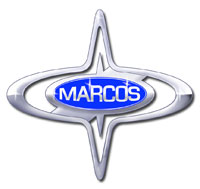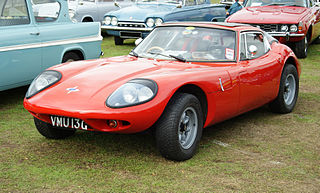| Model | Years | Production | Image | Engine | Notes |
|---|
| 7 Series 4 | 1973–1974 | 38 | | Ford Kent crossflow
or
Lotus-Ford Twin Cam | Carryover from Lotus production; ultimately discontinued due to manufacturing logistics issues |
| 7 Series 3 Twin Cam | 1974–1983 | 313 | | Lotus-Ford Twin Cam | CS3 3557 at the request of the purchaser, a New Zealand gentleman racer, was supplied with a 1962 cc twin cam Alfa Romeo Engine |
| 7 Series 3 1300GT | 1975– | 4 | | Ford Kent crossflow | |
| 7 Series 3 1600GT | 1975–1992 | 338 | | Ford Kent crossflow | This 84 hp (63 kW) unit was the only version allowed to partake in British production car racing in the 1980s |
| 1600 Sprint | 1980–1992 | 212 | | Ford Kent crossflow (Caterham tune) | |
| VTA | 1981–1985 | 41 | | Vegantune: 1598 cc Ford Cortina block, Vegantune designed twin cam head, with hemi-spherical combustion chambers | |
| Silver Jubilee | 1981–1983 | 8 |  | Ford Kent crossflow (Caterham tune) | Silver paint (excl. one BRG car) with coloured striping on bonnet and front wings |
| Avon A | 1982–1983 | 2 | | Vegantune Lotus-Ford Twin Cam | Hi-spec features such as re-trimmed two-tone interior and pepperpot alloy wheels |
| 1700 Supersprint | 1982– | 440 |  | Ford Kent 1.7L (Caterham tune) | |
| 1600 BDR | 1983–1992 | 149 | | Cosworth BDR 1600 | |
| 1700 BDR | 1986–1999 | 269 | | Cosworth BDR 1700 | |
| HPC 1700 | 1986–1995 | 62 | | Cosworth BDR 1700 | Purchase required taking performance driving course. Car was fitted with limited slip differential. |
| CVH | 1986–1991 | 91 | | Ford CVH | For Swiss export only |
| Prisoner | 1989– | 47 as of 2013 |  | (Multiple available) | Trim package to commemorate The Prisoner television series |
| HPC | 1990–1993 | Unknown | | Caterham-tuned Vauxhall VX with Twin 45 DCOE carburettors. 175BHP standard, Optional Swindon Racing Engine Upgrades to 218, 225 and 235 BHP | Purchase included a performance driving course run by John Lyon of HPC Limited (mandatory for drivers under 25 before taking delivery). Genuine HPC cars are not determined by the presence of the letter H in the 7th VIN position. |
| Vauxhall 16v cars – Caterham Vauxhall and Caterham VXI | 1993–1999 | Unknown | | Powered by reconditioned Vauxhall XE 16v on Twin 45 Carburettors, or new Catalysted Vauxhall XE 16v on GM Injection | Often confused with genuine HPC due to by the presence of the letter H in the 7th VIN position. Some of these cars are built on the later Post 1996 "handbrake on tunnel" chassis. Caterham mismarketed some of these cars in order to shift an excess stock of HPC's unique parts. |
| 35th Anniversary | 1992–1994 | | | (Multiple available) | Trim and equipment package to commemorate production of the 7. Lotus green/yellow paint. Genuine 35th Anniversary cars will have a dashboard plaque. |
| 7 GTS | 1992 | ~40 | | Ford Kent crossflow | Intended as a return to the basics of the 7, with live axle and four-speed gearbox |
| 7 Classic | 1992–1998 | | | Ford Kent crossflow | Even more minimal than the GTS, the Classic was intended as low-priced entry-level model. |
| 1.4 K-Series | 1991–1996 | | | Rover K-Series | |
| 1.4 K-Series Supersport | 1993–1997 | |  | Rover K-Series | |
| Road-Sport | 1996 | 30 | | Rover K-Series | Built with special trim, weight-reducing components, and the Caterham six-speed gearbox |
| JPE | 1992–2001 | 53 | | Vauxhall twin-cam tuned to 250bhp by Swindon Racing Engines | Very minimal and lightweight and with engine suggested to be similar to that used in British Touring Car Championship. The engine is in fact just forged pistons and an uprated cylinder head with Weber Alpha Injection. Several JPEs were built as special customer orders using steel internals and rated at 280bhp, those these are very rare. In popular culture, this model plays a role as Sōichi Sugano's car in the anime series éX-Driver by Kōsuke Fujishima. |
| S7 Competition R | 1995–2001 | 25 | | Turbocharged Vauxhall/Opel 2.0L | For Swiss market |
| 1.6 K-Series | 1996–2012 | | | Rover K-Series | Introduced chassis modifications that improved rigidity and ride quality |
| 40th Anniversary | 1996–1998 | 67 | | Rover K-Series or Vauxhall 2.0L | Special trim including two-tone red-and-silver paint scheme |
| Superlight 1.6 | 1996–2004 | 196 | | Rover K-Series | Constructed with lightweight carbon fiber components |
| Superlight R | 1997–2002 | 127 | | Rover K-Series Very High Performance Derivative (VHPD) | Equipped with numerous racing-inspired features |
| Classic VX 1600 | 1997–2002 | 224 | | Vauxhall 1.6L 8v | Inexpensive entry-level model with live rear axle |
| 1.8 K-Series | 1997–2006 | | | Rover K-Series | |
| 1.8 K-Series VVC | 1997–2006 | | | Rover K-Series | Employed engine with Rover's Variable Valve Control |
| Silverstone | 1998–1999 | 3 | | Rover K-Series | Aluminum bodywork |
| Classic VX Supersprint | 1998–2002 | 9 | | Vauxhall 1800 (Caterham tune) | |
| Clubsport | 1998–1999 | 5 | | Rover K-Series | Intended for motorsport (with roll-over protection and fire suppression features) |
| Superlight R500 | 1999–2005 | 125 |  | Rover K-Series (Caterham tune) | |
| Zetec | 1998–2008 | ~250 | | Ford Zetec | Built for the United States market |
| Autosport 50th Anniversary | 1999–2001 | 9 | | Rover K-Series | Painted red with a gold band around the nose, this special edition was built to commemorate Autosport magazine's 50th year of publication |
| Blackbird | 2000–2001 | 15 | | Honda Blackbird 1.1L | |
| SV | 2000– | 1480 (as of December 2012) | | (Multiple available) | First of the models with a wider and longer chassis for more interior space |
| GSX 1300R Hayabusa | 2000– | 14 (as of February 2013) | | Suzuki Hayabusa 1.3L | For Canadian market. Built with sequential gearbox. Also available with Hayabusa 'R' Type engine, or with Rotrex supercharging |
| Fireblade | 2001–2004 | 23 | | Honda Fireblade 919cc | Sequential gearbox, world record : fastest car going backwards (101 mph), rear live-axle, handrake lever under dashboard |
| Beaulieu | 2001–2003 | 51 | | Vauxhall 1.6L | Entry-level model with live rear axle, rear drum brakes, and paint scheme to recall the Lotus 7 |
| Superlight R300 | 2002–2006 | ~125 |  | MG XPower Rover K-Series 1.8L | Intended as a less hard-core alternative to the Superlight R500 |
| Superlight R400 XPower | 2002–2005 | 68 | | MG XPower Rover K-Series 1.8L | Rebranded Superlight R with engine and other modifications |
| Superlight R500 evolution | 2004 | 4 | | Rover K-Series | Superlight R500 with engine developed further by Minister Racing Engines and PTP (Powertrain Products) |
| 1.4 K-Series Classic | 2002–2012 | | | Rover K-Series | |
| SV30 | 2003–2004 | 4 | | Rover K-Series | Built to commemorate the 30th year of the Caterham 7. All finished in Boston Green paint and fitted with 1.6L K-Series engine. |
| Tracksport | 2003 | 2 | | MG XPower Rover K-Series | Intended for track use, and, like the SV30, was built to commemorate the 30th anniversary of the Caterham 7 |
| RST-V8 | 2004–2008 | 4 | | Motopower RST-V8 | Not an official Caterham offering; powered by the small-displacement V8 designed by Russell Savory and derived from Yamaha motorbike engines |
| CSR200 | 2005–2011 | | | Cosworth-Ford Duratec | Used a developed SV chassis, with increased rigidity and pushrod front suspension |
| CSR260 | 2005– | | | Cosworth-Ford Duratec | Similar specification as the CSR200, but with further engine development to produce 260 hp |
| CSR260 Superlight | 2006–2011 | | | Cosworth-Ford Duratec | Lightened, minimalist version of the CSR260 |
| Superlight 1.8 | 2005–2006 | ~5 | | MG XPower Rover K-Series | |
| Superlight R400 2.0 | 2006– | 135 (as of December 2012) | | Caterham-Rover K-Series | A relaunch of the Superlight R400 with Duratec (rather than K-Series) power |
| Roadsport Sigma | 2006– | 1260 (as of December 2012) |  | Ford Sigma | Marked the major transition from the Rover K-Series engine to the Ford Sigma/Duratec line |
| Axon 2R / Eco-M | 2006– | 2 | | Rover K-Series | High-fuel-economy prototype developed by Axon Automotive |
| Superlight 120 / 150 | 2006– | | | Ford Sigma | First of the 'Superlight' cars to be fitted with Ford Sigma engines |
| X330 | 2007 | 1 |  | Cosworth-Ford Duratec | One-off built to celebrate Caterham's 50th anniversary. Fitted with Rotrex C30-94 supercharger. |
| 50th Anniversary | 2007 | 50 or fewer | | (Multiple available) | Cosmetic changes only, including two-tone exterior colour schemes and a numbered plaque on the dashboard |
| RS Levante | 2008 | 9 | | Motopower RST-V8 | Available in either 400 hp normally-aspirated or 550 hp supercharged form |
| CDX | 2008–2011 | 13 | | Rover K-Series | Replica of the "Caterham Driving Experience" track-day cars |
| Superlight R300 | 2008– | 45 (in UK market) | | Caterham Powertrain Duratec | |
| Superlight R500 | 2008–2014 | 175 | | Caterham Powertrain Duratec | |
| Roadsport 175 | 2008– | | | Caterham Powertrain Duratec | |
| CSR175 | 2009– | 75 (as of December 2012) | | Caterham Powertrain Duratec | Lower cost export model for Europe and Japan |
| Lambretta | 2010 | 1 | | Ford Sigma | Trimmed and painted in Union Jack colours, in partnership with Lambretta Clothing and Oxted Trimming |
| Roadsport 125 Monaco | 2010–2011 | 25 | | Ford Sigma | Cosmetic package for the Roadsport, inspired by the Flag of Monaco |
| Team Lotus | 2011– | 37 (as of December 2012) | | (Multiple available) | Lotus green-and-yellow colour scheme |
| Supersport | 2011– | | | Caterham-Ford Sigma | |
| Supersport R | 2012– | | | Caterham Powertrain Duratec | |
| Model | Years | Production | Image | Engine | Notes |
|---|





























